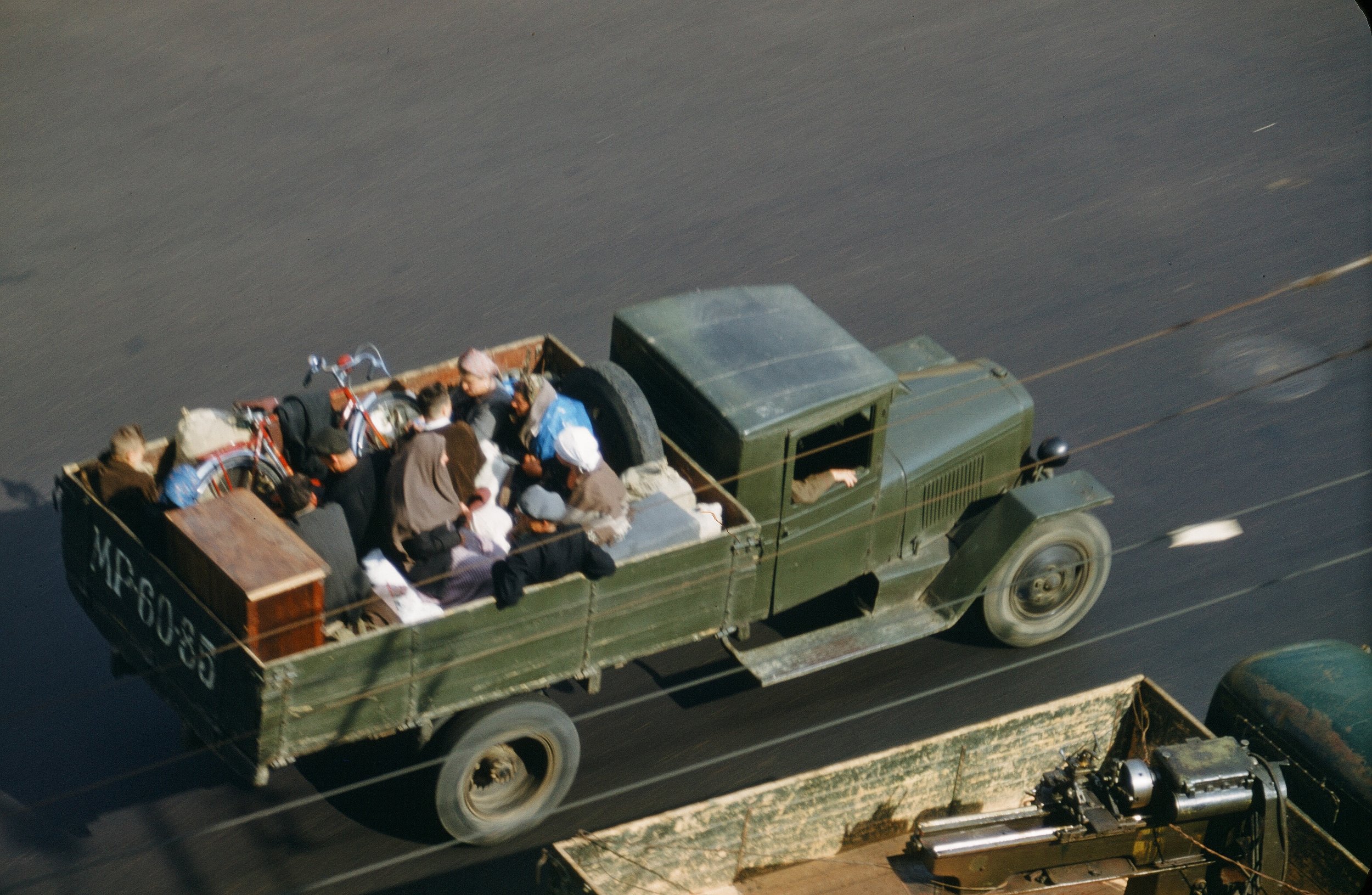Around Moscow
Jan wrote in a letter in September 1952:
We have tried numerous times to put down our impressions of Moscow and Russia in general but it just won’t work. Things either become encyclopedic in length, or too incomplete. [...] The details are too overwhelming. The whole culture and physical picture is so foreign to anything upon which we can build comparison that it becomes almost impossible. It is like an initiation into a life that is too unique to make sense anywhere else. Suffice it to say, for the present, that what you read of Russia will be no more misleading nor no more accurate than any statement of ours.
She went on:
The only fair picture of Moscow must be an objective one, but this is hard to draw. We are faced with too many annoyances, restrictions, and problems of daily living to maintain any real degree of objectivity. But even overcoming these leaves a great gap for our contact and freedom of movement is so limited. Other than servants and store clerks we have no contact whatsover with the Russians. We are fairly free to go almost anywhere in Moscow, but completely restricted beyond this. A few cities are open for visits but these trips must be registered with the Foreign Office, and travel must be by train or plane. We can drive nowhere except around Moscow proper. And even in Moscow we are not allowed to drive our own car but must use a Russian chauffeur at all times. We have never been inside a Russian home nor can ever expect to be. The only conversations we can possibly get into with Russians are on trains, but here natural caution prohibits anything but superficial talk. So . . . as ‘experts’ on Russia we suffer great limitations.
Jan expressed a sentiment shared by many foreigners in the Soviet Union, namely that the country was largely unknowable, chiefly due to a combination of official restrictions and general suspicion of outsiders. They could not penetrate Soviet society, and so remained strangely alongside it, trapped in a bizarre world parallel to that larger one around them that they could never hope to enter.
As such, no one could honestly claim to understand in any deep way the country they had been sent to observe.
Perhaps no one said it better than the British journalist Paul Winterton, stationed in Moscow during the war, when he commented: “There are no experts on Russia—only varying degrees of ignorance.”
Martin’s response to this frustrating situation was to try to understand the Soviet Union through the lens of his camera. If he couldn’t meet and speak openly with Russians (in part, it must be noted, since his Russian was not very good), he could record the external physical reality of their lives—what their cities looked like, how the people dressed, what they drove, how they made use of public space.
This was especially true of Moscow, where Martin spent nearly all of his time: the majority of the photographs in his archive are devoted to the Soviet capital. Some of the photographs he took on foot, others from inside an automobile or the embassy. He captured many of Moscow’s iconic sights—Red Square, the Kremlin, St. Basil’s Cathedral, GUM—as well as lesser-known areas off the beat of the typical tourist.
It is not surprising that Martin took most of these photographs after the death of Stalin and the general relaxation on restrictions on taking pictures in public. Martin did, however, take some photographs while Stalin was still alive, namely a few in January 1953.
Once, in November 1952, he filmed with his 16mm movie camera from the passenger seat of an automobile as he rode from his apartment on Narodnaya Street along the embankment of the Moscow River toward the Kremlin. But the majority of his photographs date from after March 1953.
It appears from the dates written on his slides, Martin went out to take photographs in Moscow on only a handful of occasions; it was not a regular habit to take pictures as he moved around the city. Indeed, most of the images were taken in either May 1953 or February 1954.
The former date is significant for that is when the U.S. embassy moved from its home on Mokhovaya Street to Tchaikovsky Street (now Novinsky Boulevard). Martin and Jan moved from Narodnaya Street to an apartment on the fifth floor of the new embassy. Jan wrote later that summer they were glad that they weren’t any higher because the elevator was almost always broken and they had to climb the stairs on foot.
Their windows faced out onto Tchaikovsky Street and it was hard for them to get use to what Jan described as “the constant ear pounding noise of trucks, trucks, trucks.”
Martin took many photographs from their apartment of the pulsating life on the street below.
They watched the construction of an enormous apartment block directly across the street during the summer months. In October, some of the workers hung out large signs facing the embassy that read “Peace to the World!” and “Peace Will Defeat War!” Jan wondered if the messages were meant for their benefit and toyed with the idea of hanging her own sign from their windows reading: “Open House—Come and Meet Some Americans.”




